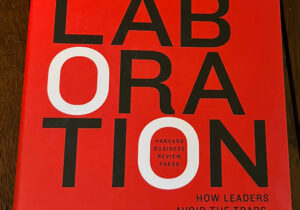A Guide to Managing Research Teams

Research training programs rarely teach management of staff and trainees. Particularly for those of us who go on to careers in academic medicine, our ability to effectively manage a team is critical to the success of our career. Graduate school, fellowship, and postdoctoral training provide substantial opportunities to develop scientific expertise, but very little structured training in management and team building. I discovered very early on that staff and trainees can respond to the same type of management and oversight in different ways, which often left me at the mercy of how well a trainee could operate under my management style. With the help of my mentors and colleagues, I have developed a training infrastructure for my group that tries to balance highly structured onboarding with loosening oversight as a staff member or trainee demonstrates independence. Importantly, the system we have established leverages several modern web-based platforms that allow for more seamless oversight of trainee activities and progress, even when traveling (or working from home due to a pandemic), and reduces the flood of email chains that can often result in items slipping through the cracks. I hope you find this structure useful as you launch your own team.
Structured Training Agendas. Early on, it became quite clear that trainees would engage with training content in very individual ways, making it difficult to evaluate the degree to which a given trainee was prepared to operate independent of oversight. To address this challenge, my colleagues and I at the Vanderbilt Memory & Alzheimer’s Center have established highly structured training agendas that we use for all new staff and trainees that include boilerplate onboarding, individual training modules that are consistent across the center, and additional training modules that are specific to a staff member or trainee’s job description. After each training module, trainees are required to populate a short presentation that provides an overview of what they learned and they then “teach” the content to their primary mentor or supervisor. This provides a structured environment where the trainee can receive direct feedback on where they missed critical information, and begins to set expectations about work products, timeliness, and professionalism. These training agendas often require a few hours of commitment from the mentor or supervisor for the first few weeks, but we have found that the result is a more rapid transition to independence for high capacity trainees, and appropriate continuation of supervision for trainees who struggle a bit to get on their feet.
Developing the individual training modules can also be a bit of work, but we have found that the development of a module can actually be a fantastic training opportunity for new staff as well. Many of our current modules were developed during training by a new staff member, which provided them an opportunity to learn the material while also giving us an opportunity to provide feedback and help formulate the module in line with our expectations.
Evernote for Lab Notebooks. While lab notebooks are certainly the norm in many basic science laboratories, particularly when working in a wet lab, they are not as common in dry labs. We have implemented a system for lab notebooks in which I build an Evernote notebook for each staff or trainee that is owned by my user profile and shared with the trainee. Importantly, this means there is no risk of losing the notebook when the trainee moves on from the lab, and also provides an incredibly useful way to quickly check in on trainee progress without having to set up a meeting. Trainees’ notebooks include notes for training agenda items, and then eventually for individual projects and tasks that are assigned. At the top of the note the trainee records the location of all files (more details on the file structure below), details about the dataset being leveraged, and a short summary of the goals. Then, each project includes the down and dirty details of analyses, including bits of code, summary of results, basic figures, and any roadblocks. During mentorship meetings, I can just pull up the lab notebook, evaluate progress, and provide some feedback. Importantly, I can also easily see at any time exactly where a trainee is in terms of their progress, which means when I think to myself “I wonder where so-and-so is on Project A and why I haven’t received an update in a couple days?” I can easily hop on the note and check where things stand. This often results in either shooting a quick message or dropping by their desk to talk through an issue. It also allows me to do quick checks on progress very quickly outside of office hours by pulling up their notebooks on my phone.
At first, it took some time to get this off the ground because not all trainees fully embraced it. However, by being consistent in asking about the notebook, and having a few staff and trainees who could model strong notebooks, it has become part of our culture.
Box for File Management. A major hurdle in providing feedback and helping to troubleshoot code is access to proper scripts and raw data files. Moreover, copying and moving raw data files can result in major data version issues that can easily be missed. We have established a lab Box directory where all raw files and all staff and trainee files exist. Most of our data analysis is performed in R, and the Box structure allows for easy cross-checking and troubleshooting by referring to centrally stored files. This means that I can easily hop on any script written in my group, run through it to find the broken piece, and troubleshoot if needed. It also means that manuscript “code” checks can be completed quickly without pushing data back and forth. Importantly, this also means that we only need to point to file locations in Evernote and never actually store any data within Evernote (which would not comply with the data use requirements for the datasets we often leverage in our work).
Asana for Project Management. The Vanderbilt Memory & Alzheimer’s Center is an interdisciplinary research center focusing on risk and resilience of Alzheimer’s disease. Many investigators within the center infrastructure have large-scale collaborations with faculty and staff biostatisticians that require constant communication and carefully documented progress reports. Asana is a web-based platform that allows project tasks, communication, and results to be tracked within a single space. Projects are built in Asana and individual tasks within that project (e.g., building an analytical dataset, performing primary analyses, performing sensitivity analyses, developing manuscript quality figures) can be assigned to team members. This has streamlined our collaborations and dramatically reduced confusion over missed emails or unwieldy email threads.
Slack for Communication. After a year of working remotely due to COVID-19 and onboarding several team members who have never met in person, our lab has found Slack to be an effective communication tool. The web-based messaging tool with a channel structure helps the team ask individual questions, share interesting publications to a central location, discuss shared hardware issues or computational bottlenecks, and celebrate wins among the team. Slack’s storage and search features also allow team members to locate and refer to past conversations, as needed.
Other programs and techniques can certainly be leveraged to help navigate the challenges of team management; these are just the ones that have worked for me! When you prepare to launch your team, I recommend taking the time to think about and organize your workflows so that your system can easily scale as the team grows!
More Resources
How to Manage People as a New Investigator
Go go go…read The Progress Principle
Not that Kind of Boss: Tales of Team Management and Mentorship






0 Comments